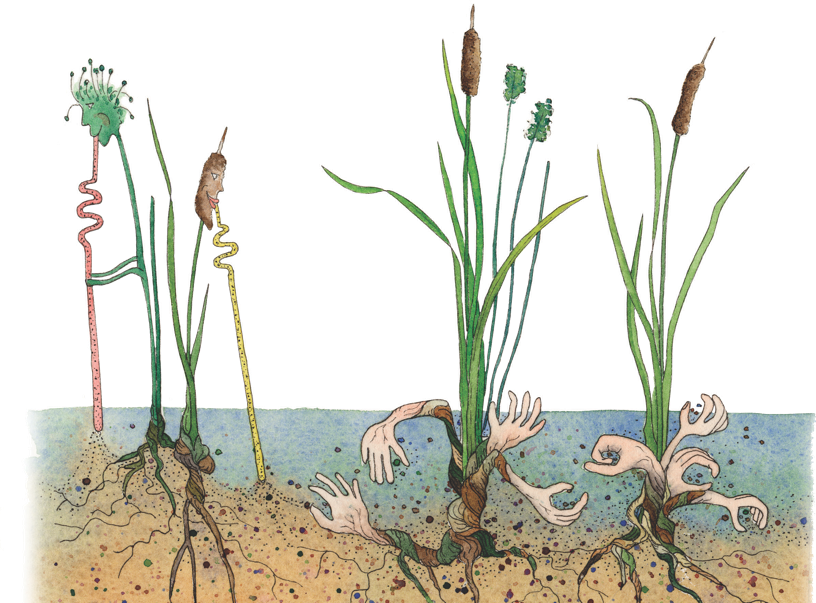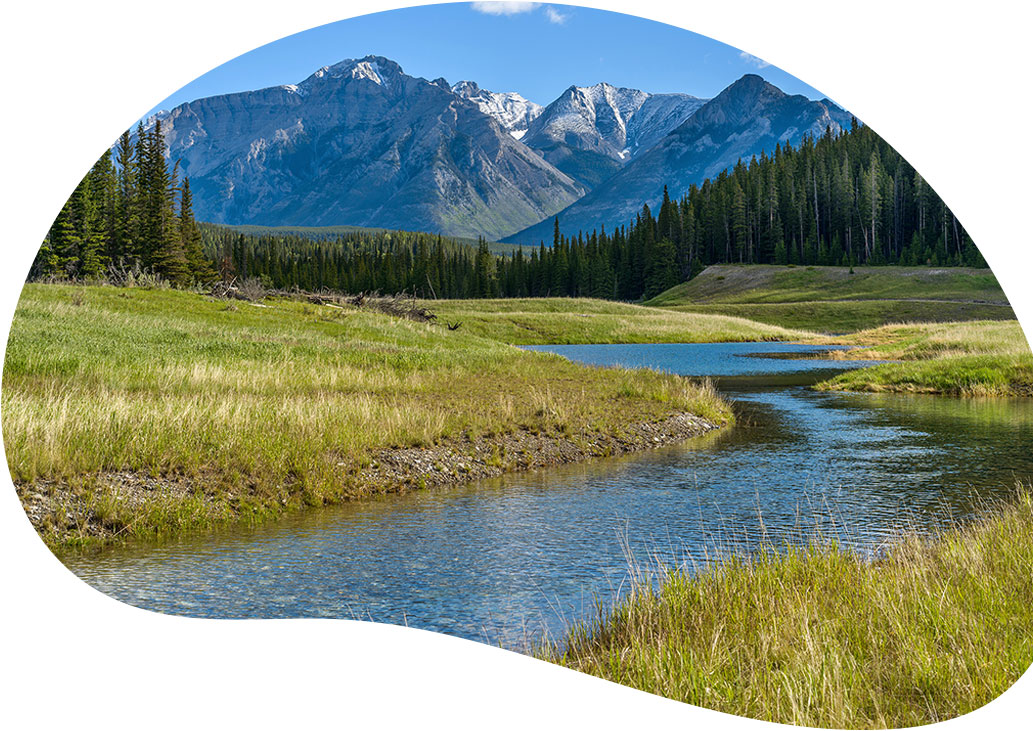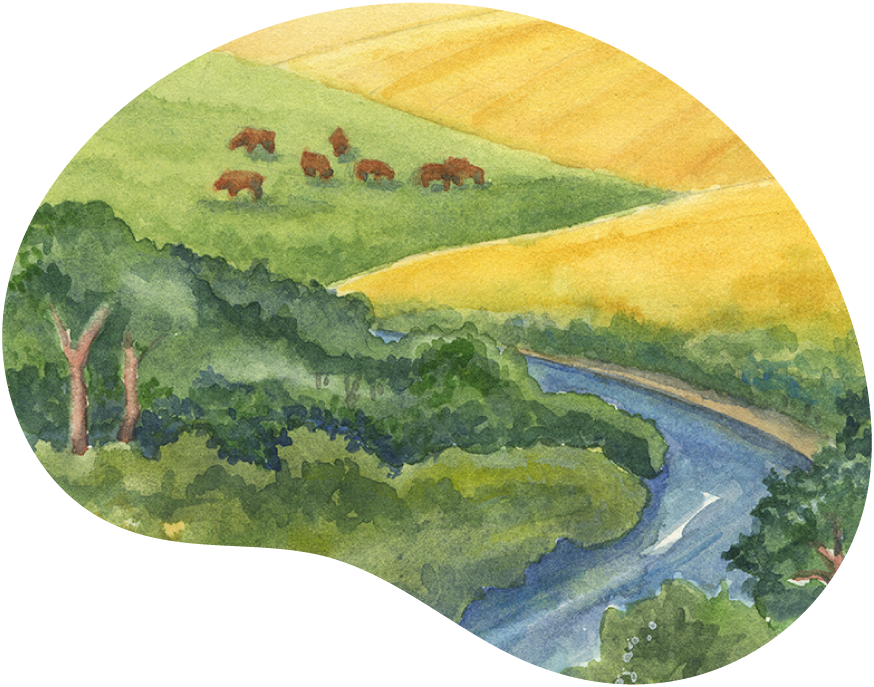What are Riparian Areas?
Riparian areas are the lands adjacent to streams, rivers, lakes and wetlands, where the vegetation and soils are strongly influenced by the presence of water. Although they make up only a small fraction of the land, they are among the most productive and valuable of all landscape types and have been the focus of conflicts between resource users.
Riparian areas are formed as the result water, soil and vegetation interacting with one another. Whether we call them floodplains, shorelines, green zones or riparian areas, their character begins with fine wet soils developed in them.
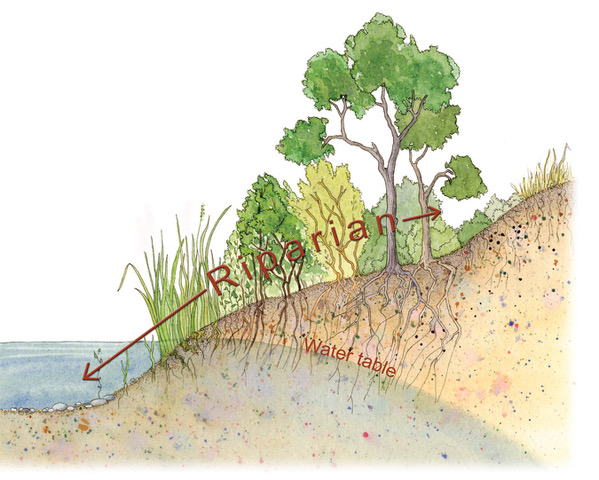
What makes riparian areas different from the uplands?
What makes riparian areas different from the uplands?
Riparian areas are formed as the result of water, soil and vegetation interacting with one another.
Whether we call them floodplains, shorelines, green zones or riparian areas, their character begins with fine wet soils developed in them.
Vegetation in the riparian area is different from that of uplands:
- Riparian areas stay greener longer and produce more forage than uplands, partly due to soils and mostly due to an elevated water table. The type and abundance of vegetation is a tip-off to identifying riparian areas. Vegetation is different and it attracts livestock, wildlife and humans.
- Riparian areas are productive and can be reliable producers of forage, shelter, fish, wildlife and water. These areas are a buffer, an insurance policy especially useful to have when drought or flood occurs. They are part of a healthy, functioning landscape and form part of an extensive drainage basin within every watershed.
What is the status of riparian areas in Alberta?
The health of riparian areas has declined dramatically in many areas of Alberta and North America since the early 1900’s. Although there are many causes
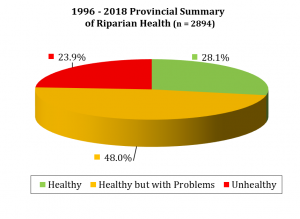
of this, one main reason is that we often do not understand or fully appreciate the functions and roles riparian areas provide to landscapes and societies.
Although riparian areas make up only a small fraction of our landscape, they are disproportionately important to fish and wildlife, recreation, agriculture, and society in general.
Consider that most cities and towns are built next to a river or lake (and therefore the riparian area), and that 80% of Alberta’s wildlife rely in whole or in part on riparian areas to survive. The health and functioning of riparian areas can be influenced by activities as diverse as road construction, resource extraction, agriculture, urban or rural development, and recreation.
Ecology and Function
Although riparian areas provide similar functions for flowing (streams/rivers) and non-flowing (lakes/wetlands) systems, there are some differences.
What do Riparian Areas Do?